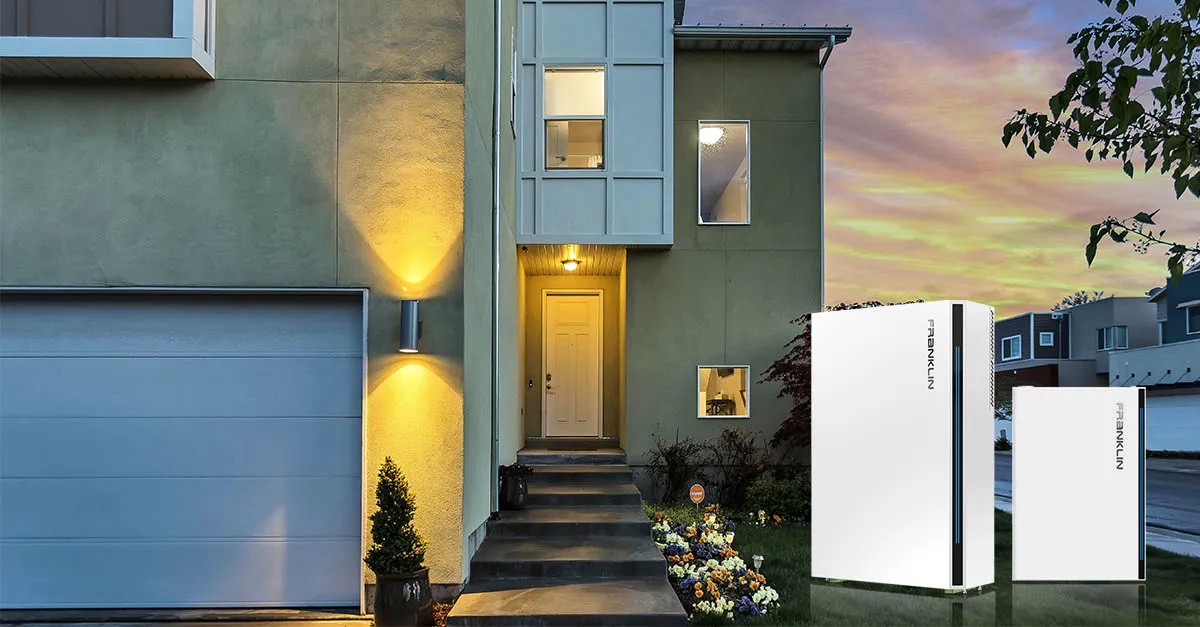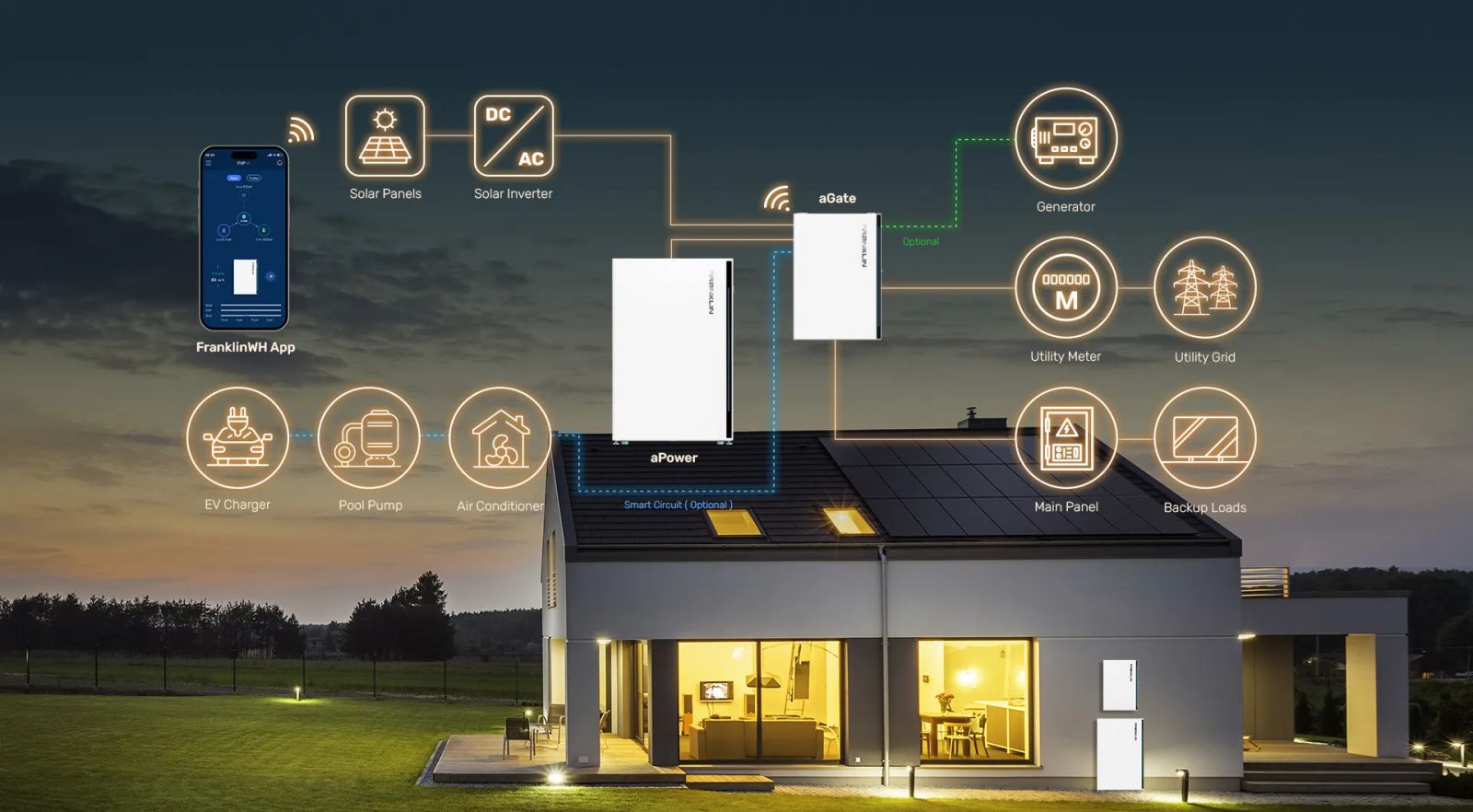The Future is Bright for Solar Plus Storage
The best days for renewable energy are ahead of us. Modern government initiatives, such as the Inflation Reduction Act, only begin to scratch the surface of the opportunities renewable energy can provide. The passing of federal, state, and local legislation signifies a movement of innovation that is inspiring and prioritizing green technology growth.
As energy conservation and going green becomes more popular, people are considering the energy efficiency of their homes more than ever. Although solar panels likely come to mind first when thinking about renewable energy options, pairing them with energy storage systems (ESS) provides an even more impactful offering for homeowners. Battery storage has a big opportunity for growth in the energy market because it provides a failsafe and strong alternative to the vulnerable, outdated, and expensive utility grid.

Here's why battery storage systems are the solution to address the current energy landscape, and a long-term sustainable solution for today’s homeowners.
ESS is a solution to rising energy costs
On average, electricity prices surged 14.3 percent last year, and some people may have experienced a 17 percent increase in energy bills, depending on location. An ESS allows the homeowner to minimize the impact of these price surges by saving the energy generated from solar for when they need it most. This means a home can run on solar energy even when the sun isn’t shining. During periods of high sunshine, as in the summer months, excess solar power production is not wasted. It’s stored in the battery so homeowners can use their stored energy on their own terms, such as during peak-rate evening hours. This provides energy freedom for the homeowner while decreasing reliance on grid energy, which is increasingly becoming more expensive.
In addition, over 40 states permit homeowners to perform some sort of net energy metering (NEM), which allows households that generate excess electricity from their solar panels to sell their generated energy back to the grid. However, several states are in the process of implementing restrictions on how much homeowners are paid for selling that excess energy, with California’s recent net metering ruling slashing prices by nearly 60 percent, and promoting time-of-use pricing structures. To get the best return on solar in these conditions, it is critical to store excess solar energy when it is abundant. As similar measures take hold across the country, it’ll be even more important for homeowners to be able to shape their energy usage to reduce utility costs and maximize solar ROI.
The American energy grid is outdated
In addition to being pricey, about 70 percent of the US energy grid is more than 25 years old. This outdated infrastructure causes vulnerabilities that lead to spikes in blackouts. As severe weather events become increasingly common, these blackouts are becoming more frequent, and harder to fix. The American energy grid is not designed to keep up with evolving weather events; homeowners are entitled to take powering their home into their own hands.
Pairing solar with ESS is a great way to give homeowners energy independence. They can essentially store excess energy created by their solar panels, if they have battery storage. When blackouts occur, backup energy stored in the battery effectively acts as a generator, allowing them to power their home without the grid’s support. Moreover, what many homeowners don’t know is that, during power outages, rooftop solar systems alone are designed to shut down due to safety reasons. In other words, just because your home has solar panels does not mean it will have power in an outage.

Avoiding this pitfall is simple with an energy management system with storage that allows for separating solar and the battery from the main panel and the grid. That separation provides the safety and control necessary to continue to provide local power to the home, even during a grid outage. Solar paired with battery storage remains operational, day or night, regardless of what’s happening with the grid. This lets homeowners avoid the impacts of blackouts and weather events as they maintain control over their own energy.
Government incentives
With the Inflation Reduction Act (IRA) in place, new sustainable-focused incentives were announced to influence Americans to switch to renewable energy solutions. Battery and energy storage technologies are included as an eligible expenditure in the IRA, with the tax credit increased from 26 percent to 30 percent of the battery cost. Further, an ESS-only project, when retrofitting previously installed solar panels, can qualify for the incentive, which was not the case before. Through this increase of the tax credit ratio, the federal government is encouraging the use of residential energy storage.
California is one state leading the charge to incentivize homeowners toward ESS through its Self-Generation Incentive Program (SGIP). SGIP offers approximately $250/kWh for a home battery purchase, which covers approximately 25 percent of the cost of an average energy storage system. Unfortunately, California’s NEM 3.0 recently took effect, which announced a new net metering program that decreases the savings that rooftop solar users can get by 60 percent, compared to the NEM 2.0 program. Although NEM 3.0 decreased the payback savings for solar, the IRA battery incentive and SGIP will still save homeowners money when they pair solar with ESS, ultimately leading to a nice ROI.
I can’t beat around the bush. Adding solar panels and ESS is an upfront investment — over time, that investment will pay for itself. As renewable energy technology advances, the cost savings and benefits are expected to become even more significant.
Ke Bi is Chief Operating Officer at FranklinWH, a whole-home energy management system integrating solar, battery, grid, and generator power sources to optimize the safety, reliability, and efficiency of home energy.
FranklinWH | www.franklinwh.com
Author: Ke Bi
Volume: 2023 July/August









.png?r=9409)

